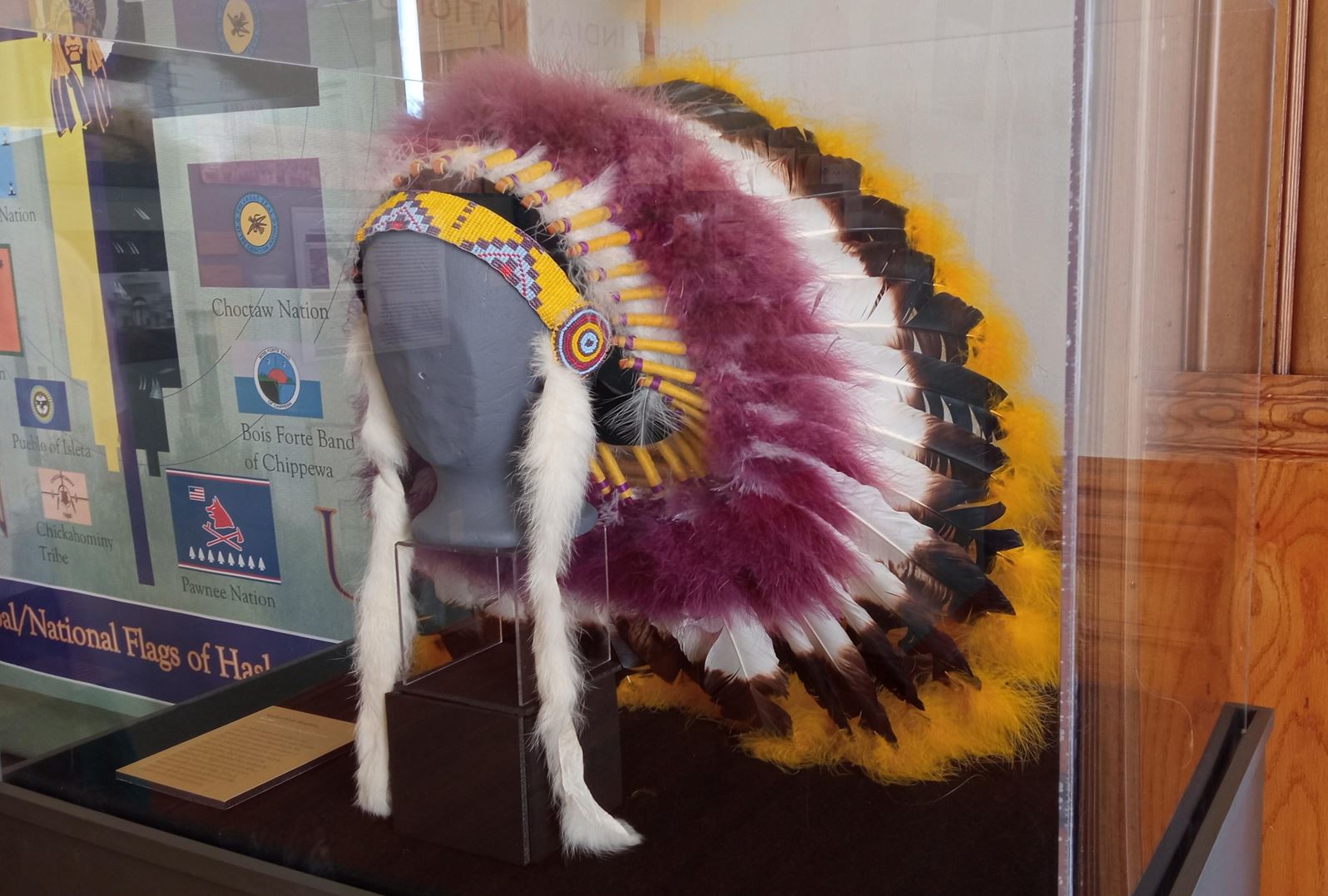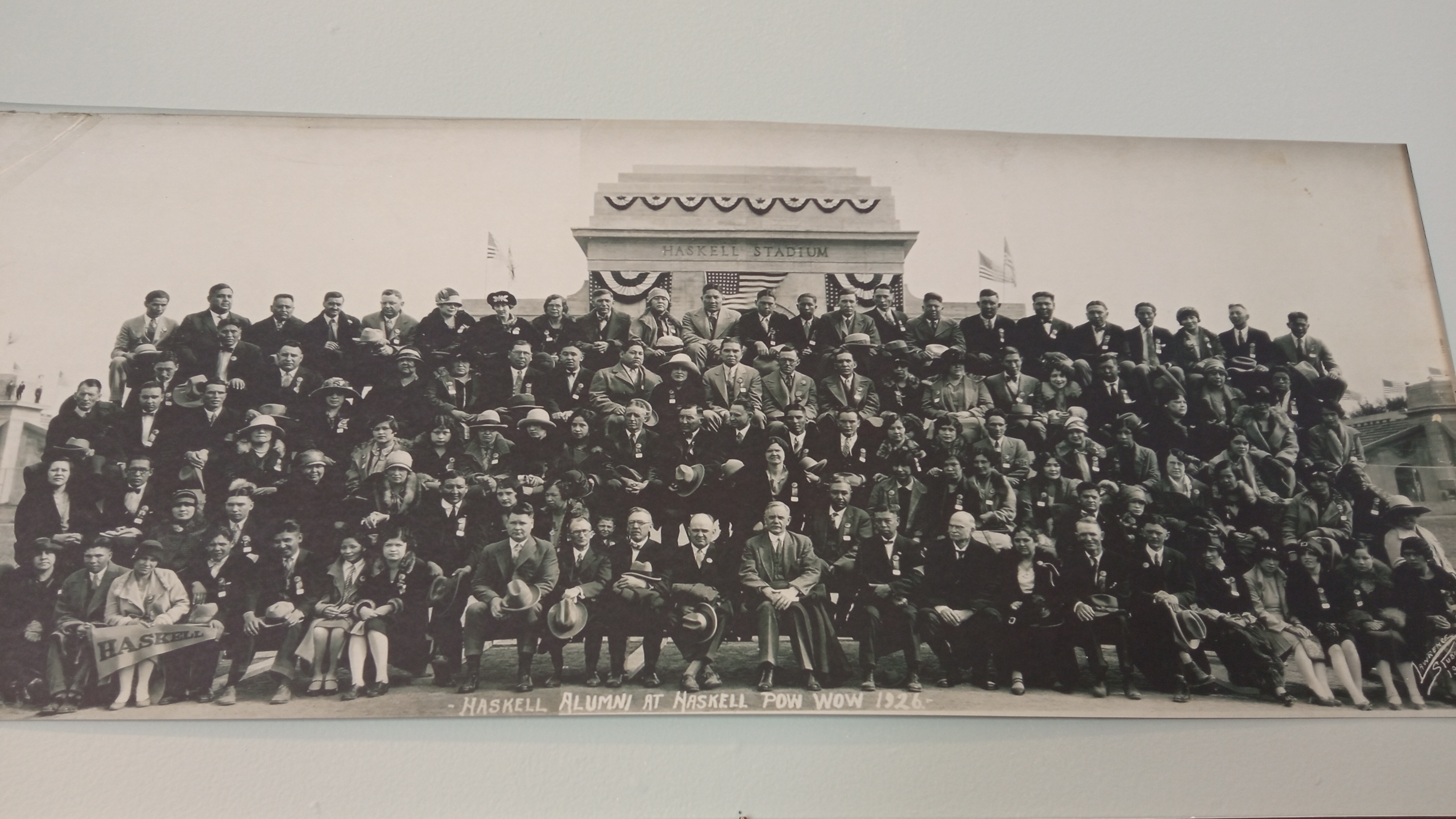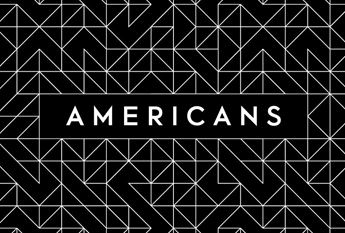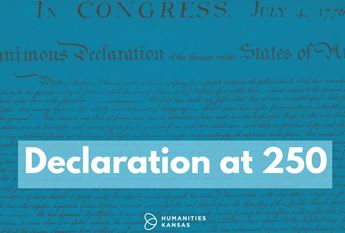

From Then to Now: A Student History of Haskell Indian Nations University
February 6, 2023
At the Watkins Museum of History, a new exhibition showcases both past and present, pain and joy. The exhibition, From Then to Now: A Student History of Haskell Indian Nations University, was led by intern Geoffrey C. Pate (Choctaw Nation of Oklahoma), a Haskell graduate whose father and grandmother also attended Haskell. The exhibition was made possible with support from Humanities Kansas. According to Steve Nowak, Executive Director of the Watkins Museum of History, the exhibition is intended to be the first in a series created by interns from Haskell, representing “the beginning of a relationship rather than a finished product.”
Longtime Lawrence locals may be familiar with the broad strokes of Haskell Indian Nations University’s origin story as an Indian boarding school, but the exhibition contextualizes the school’s history as part of a larger movement in the United States. It also spotlights the dynamism of Native communities today.
Haskell was established by the federal government in 1884 as the Indian Industrial Training School, one of many such boarding schools opened across the nation as an experiment in assimilation. Their mandate was to separate Native young people from their tribes and tribal languages and traditions. There was no ambiguity in the purpose of these training schools: their motto was “Kill the Indian, Save the Man.”
The Indian Industrial Training School was modeled on military schools. In addition to teaching trades like masonry, blacksmithing, and agriculture, boys were outfitted in military uniforms and instructed in military drills. Girls, meanwhile, were taught cooking, sewing, childcare, and other household skills. Boys and girls alike were strictly disciplined; any rule-breaking could land children in a jail cell as punishment.

Haskell alumni at the annual powwow, 1926.
Over the course of its 140-year history, Haskell has evolved from the Indian Industrial Training School to Haskell Institute, Haskell Indian Nations Junior College, and finally, Haskell Indian Nations University. From a boarding school bent on eradicating Native American culture, it has become an institution at the forefront of researching and celebrating Native life.
The exhibition doesn’t shy away from Haskell’s origins, but its focus is on the richness of student lives. It celebrates the success of Haskell’s football program in the 1930s, and it highlights Jim Thorpe (Sac and Fox), who attended Haskell Institute and is considered one of the greatest multisport athletes of all time. There’s also an entire wall dedicated to dancing, with both video footage and still images featuring a variety of traditional dances.
While many conversations about Native communities in the United States are in the past tense, the exhibition reminds visitors that Native Americans and their cultures are alive and vibrant in the present day.
From Then to Now: A Student History of Haskell Indian Nations University is part of A More Perfect Union: America at 250, an initiative of the National Endowment for the Humanities. The exhibition can be experienced at the Watkins Museum of History in Lawrence through April 30, 2023.
Join the Movement of ideas
- VISIT From Then to Now: A Student History of Haskell Indian Nations University at the Watkins Museum of History in Lawrence through April 30, 2023.
- LEARN about the history of American Indian boarding schools in Eric P. Anderson’s Speakers Bureau presentation of the same name. His and dozens of other topics are available free of charge to Kansas nonprofits. Learn more.
- READ a Big Idea essay from Dr. Darryl Monteau (Kiowa-Apache-Comanche), “American Indian Students Define Success in Their Own Terms.”
- LISTEN to a story about the history of the Memorial Arch at Haskell Indian Nations University as told by Eric P. Anderson (Citizen Potawatomi Nation).



